Characteristics
The following shows characteristics that occur in U.S. hardwoods. Some are inherent to certain species and others are generic to all. These characteristics either occur naturally in the lumber or as a result of the drying process. As has already been discussed, the grades are based on the percentage of clear, defect free wood in the board.
The NHLA grading rules allow the following characteristics in the clear cutting percentages for all grades and they are therefore not considered defects.
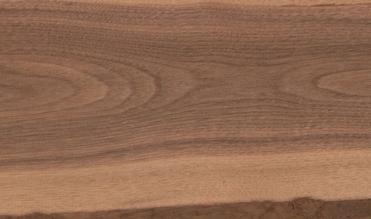
Heartwood and Sapwood:
Heartwood is the mature wood, which is often darker, extending from the sapwood to the pith. Sapwood is the lighter coloured wood growing from inside the bark to the heartwood.

Burl:
A swirl or twist in the grain of the wood that does not contain a knot.
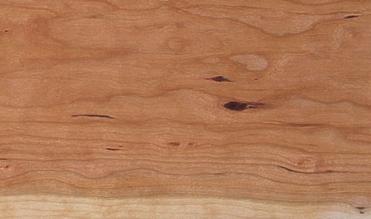
Gum Streaks:
Mineral-like streaks of colour naturally occurring only in cherry.

Mineral Streaks:
Streaks of colour ranging from olive to blackish-brown, which typically follow the grain pattern.

Glassworm:
Random mineral-like tracts. Usually associated with ash.
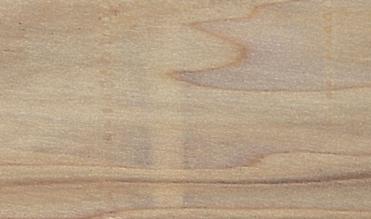
Sticker Mark:
The mark left on the board from a seasoning sticker, which can be removed in the surfacing planing process.
Note: Although the NHLA grading rules do not consider these characteristics as defects for the standard grades, allowances are made within the individual species. For example, species such as hard maple and ash are more desirable if there is a large portion of the board that is sapwood (white) and very little heartwood. The reverse is true when specifying species such as cherry, oak and walnut. It is essential that buyers familiarise themselves not only with each species but the growing regions throughout the USA as well. Climate, soil and growing conditions such as hills and valleys all play an important role in the growth of the tree. As previously stated, the NHLA rules are the framework to begin the trading process. More information on characteristics found in individual species is available in other AHEC technical publications.
DEFECTS

Bird Pecks:
Small blemishes in the grain pattern resulting from birds pecking that sometimes contain ingrown bark. An exception to the rule is hickory and elm.

Sound Knot:
A knot solid across its face, which shows no indication of decay.

Sticker Stain:
Stain that is typically grey in colour occurring from stickers used to season lumber.

Worm Holes:
Holes in the wood ranging in size from 1/16” to over 1/4”.

Bark Pocket:
A bark-filled distortion in the grain pattern.

Check:
A lengthwise opening on the face of the board resulting from rapid or faulty drying.
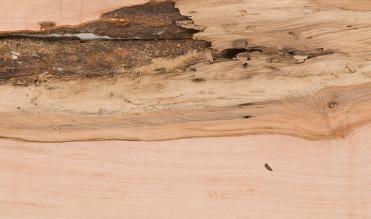
Decay or Rot:
The breaking down of the wood substance by fungi. The discoloration of the sapwood indicates the initial evidence of decay.
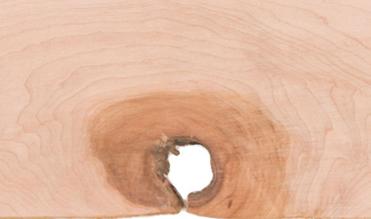
Unsound Knot:
A circular area that once formed the base of a branch or twig and has a pith centre (in some cases the wood may be missing).
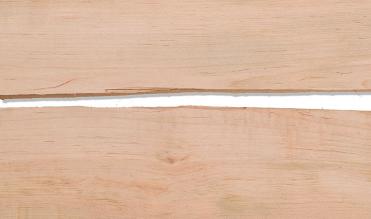
Split:
A lengthwise separation of the wood created as the wood dries.
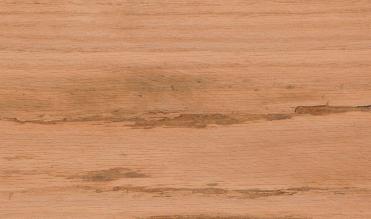
Shake:
Shake is a separation between the annual growth rings.
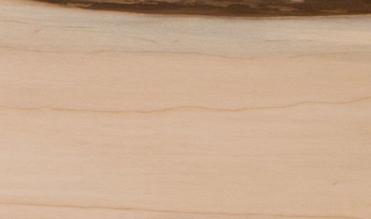
Wane:
Bark or the lack of wood caused by the round nature of the tree or log.
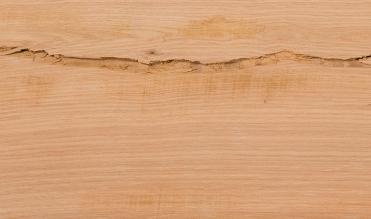
Pith:
The small soft core at the structural centre of the tree.

Grub Holes:
Holes larger than 1/4”.
Note: The following defects are considered sound and are allowed in the clear cuttings of 2B Common; bird pecks, sound knot, sticker stain and worm holes.